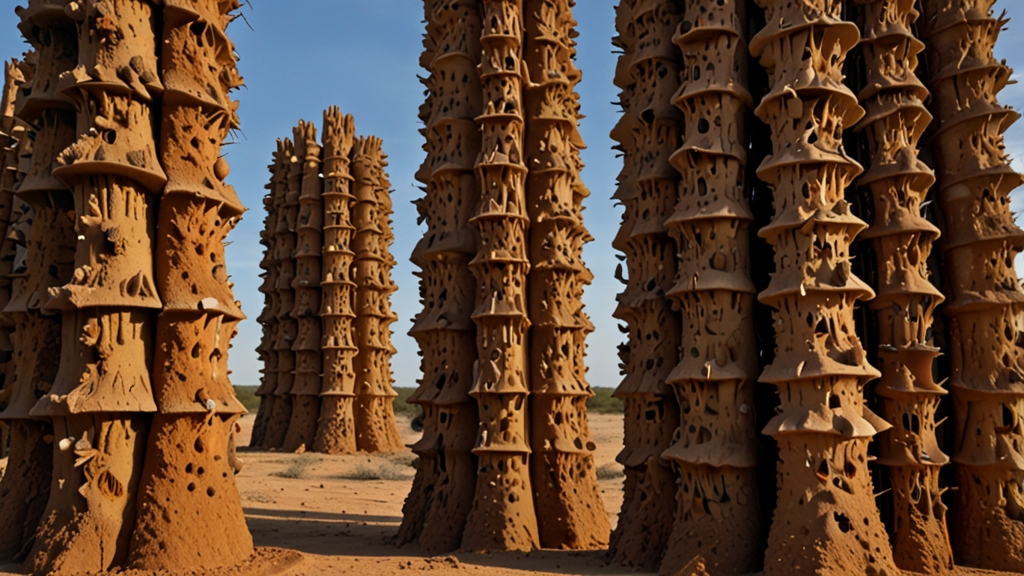The Shocking Truth About Termite Towers: Nature's Ingenious Architects
In the elaborate world of natural architecture, termites stand out as some of the most skilled and industrious builders. Their towering structures, often referred to as termite mounds or termite towers, are marvels of engineering, demonstrating a level of complexity and efficiency that rivals even human architecture. But what secrets do these termite towers hold, and what can we learn from nature's tiny engineers?
Unveiling the Structure
At first glance, a termite mound may appear to be nothing more than a disorganized pile of dirt. However, upon closer inspection, these towers reveal an intricate network of tunnels and chambers, perfectly designed for ventilation, temperature regulation, and protection. The outer shell of the mound is typically hard and weather-resistant, offering a fortress-like protection against predators and environmental hazards.
Inside, the termite colony is organized with precision. There are nurseries for the young, specialized chambers for the queen, and fungus gardens where termites cultivate their primary food source. The whole system is underpinned by a series of air ducts that facilitate airflow, maintaining an ideal temperature and humidity level year-round.
The Ventilation System
One of the most astonishing features of termite towers is their natural air conditioning system. The mounds are constructed with a network of air pockets and channels that allow warm air to rise and escape from the top, while cool air is drawn in from the bottom. This continuous circulation maintains a stable microclimate inside the mound, essential for the survival of the colony.
"The termites' natural HVAC system is remarkably efficient. Engineers and architects are fascinated by how such tiny creatures can create structures that automatically maintain a perfect living environment," states Dr. Jane Goodall, a renowned ethologist and environmentalist.
Materials and Construction
Termites use a combination of soil, saliva, and feces to construct their mounds. This mixture, often referred to as "termite mortar," hardens to become exceptionally durable. The construction process is a collaborative effort, with thousands of termites working together, transporting tiny particles of soil and organic material, and precisely placing them according to the colony's architectural blueprints.
What's particularly fascinating is the ability of termites to adapt their building methods based on the environment. For instance, in arid regions, termite mounds are designed with thicker walls to retain moisture, while in wetter areas, the structure incorporates drainage systems to prevent flooding.
Lessons for Human Engineers
Modern architects and engineers have started to draw inspiration from termite mounds. The principles of passive cooling and natural ventilation observed in termite towers are being studied and implemented in sustainable building designs around the world. By mimicking these natural systems, we can reduce reliance on artificial heating and cooling, leading to more energy-efficient buildings.
"Termite towers epitomize biomimicry at its finest. They remind us that nature has already solved many of the problems we face today. By studying these natural structures, we can unlock new possibilities for sustainable architecture," explains Professor Tom Watson, an expert in biomimetic engineering.
Conclusion
The genius of termite towers lies in their simplicity and efficiency. These structures are not just evidence of the remarkable capabilities of termites but also serve as a reminder of the intricate balance and ingenuity present in the natural world. As we continue to face challenges related to climate change and resource management, turning to nature for inspiration offers a promising path forward.
By understanding and appreciating the sophisticated engineering of termite mounds, we can learn valuable lessons that might one day transform our own approaches to building and living sustainably. Nature's tiny architects have much to teach us, if only we take the time to observe and learn.











